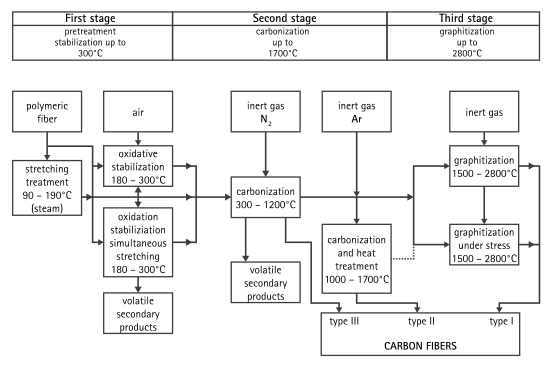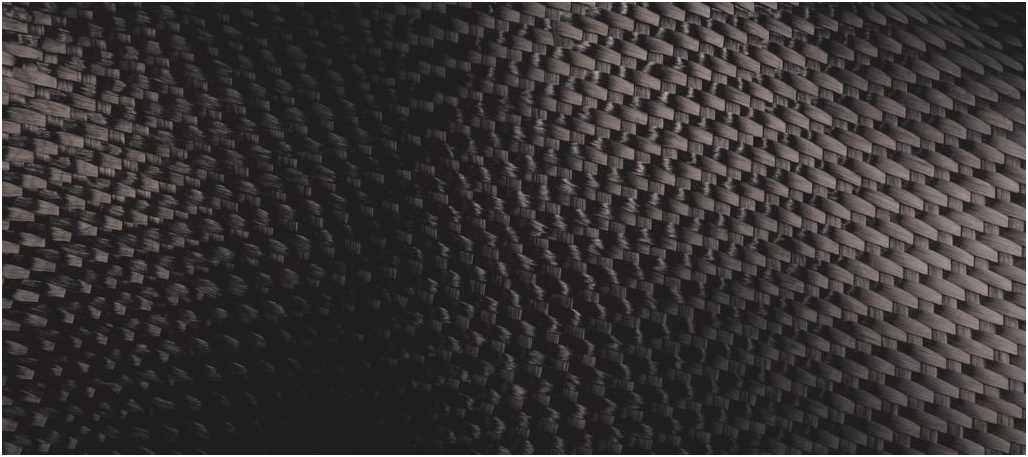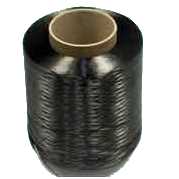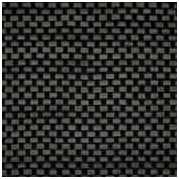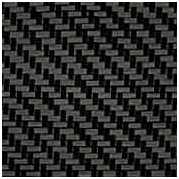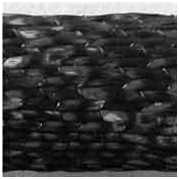Carbon Fibre – strong, stiff, & light weight fibres
Properties, process, history, and application of carbon fibres
The carbon fibres are ideally used where strength, stiffness, lighter weight and outstanding fatigue properties are of critical importance. They are also used where high temperature, chemical inertness and high damping are essential. widely used in commercial and civilian aircraft, recreational, industrial, and transportation markets.
A brief history of Carbon Fibres
Thomas Edison invented the electrical bulb during 1879 and he used cotton threads/bamboo slivers at very high temperatures in an enclosed glass tube which cuts off oxygen supply and threads were backed which carbonized them into carbon fibre filament. Roger Bacon was the first to create the carbon fibre from polyacrylonitrile (PAN) during 1958 and discovered its tensile strength.
About 85 to 90% of fibres are made from polyacrylonitrile and remaining are made from rayon or petroleum pitch. All of these materials are organic polymers, characterized by long strings of molecules bound together by carbon atoms.
US Airforce and NASA began using carbon fibre for its applications to aircraft and spacecraft. Carbon fibre and Kevlar fibres are materials that are used for making bulletproof vests protective inserts etc. They are known to be the most composite materials along with glass fibres and are strong and functions extremely well.
In comparison, steel has a tensile modulus of about 29 million psi (200 million kPa) thus, the strongest carbon fibres made are ten times stronger than steel and eight times that of aluminium, and are much lighter than both materials, 5 and 1.5 times respectively.
DEFINITION OF CARBON FIBER
- A material consisting of thin, strong crystalline filaments of carbon, used as a strengthening material, especially in resins and ceramics.
- a very strong lightweight synthetic fiber made especially by carbonizing acrylic fiber at high temperatures; also: a material made from such fibers embedded in a resinous matrix
- a strong, stiff, thin fiber of nearly pure carbon, made by subjecting various organic raw materials to high temperatures, combined with synthetic resins to produce a strong, lightweight material used in construction of aircraft and spacecraft.
How is Carbon Fiber Made?
An extremely strong, thin fibre, made of aligned carbon crystals with a shape of a honeycomb and consisting of long, chainlike molecules of pure carbon that are made by charring synthetic fibres such as rayon in the absence of oxygen. Carbon fibres are used in high-strength composite materials in aircraft, automobiles, architectural structures, and in other applications where light materials capable of withstanding high stress are required. These crystals organize themselves in long flattened ribbons and are used to produce carbon fibres. We call it precursor.
Precursor — polyacrylonitrile (PAN) is raw material to make 90% of carbon fibres. The remaining 10% is made from rayon or petroleum pitch. All of these materials used are organic polymers, characterized by long strings of molecules bound together by carbon atoms. The exact composition of each precursor prepared varies from one company to another company and is generally considered a trade secret.
During the manufacturing process, a variety of gases and liquids are used. The design of the material is prepared to react with the fibre to achieve a specific planned effect. Other materials are designed not to react or to prevent certain reactions with the fibre. As with the precursors, the exact compositions of many of these process materials are proprietary.
The process for making carbon fibres is a combination of partly chemical and partly mechanical. The precursor is drawn into long strands, ribbon’s or fibres and then heated to a very high temperature under enclosed conditions without allowing it to come in contact with oxygen.
Without oxygen, the fibre cannot burn. Instead, the high temperature causes the atoms in the fibre to vibrate violently until most of the non-carbon atoms are expelled. This process is called carbonization and leaves a fibre composed of long, tightly interlocked chains of carbon atoms with only a few non-carbon atoms remaining.
While ZOLTEK – carbon fibre manufacturing company has its own trade secrets and we’re also eager to encourage a broader understanding of carbon fibre as an ideal material for commercial use.
Stabilizing
Before the fibres are carbonized, they need to be chemically altered to convert their linear atomic bonding to a more thermally stable ladder bonding. This is accomplished by heating the fibres in air to about 390-590° F (200-300° C) for 30-120 minutes. This causes the fibres to pick up oxygen molecules from the air and rearrange their atomic bonding pattern. The stabilizing chemical reactions are complex and involve several steps, some of which occur simultaneously. They also generate their own heat, which must be controlled to avoid overheating the fibres.
Commercially, the stabilization process uses a variety of equipment and techniques. In some processes, the fibres are drawn through a series of heated chambers. In others, the fibres pass over hot rollers and through beds of loose materials held in suspension by a flow of hot air. Some processes use heated air mixed with certain gases that chemically accelerate the stabilization.
Carbonizing
Once the fibres are stabilized, they are heated to a temperature of about 1,830-5,500° F (1,000-3,000° C) for several minutes in a furnace filled with a gas mixture that does not contain oxygen. The lack of oxygen prevents the fibres from burning in the very high temperatures.
The gas pressure inside the furnace is kept higher than the outside air pressure and the points where the fibres enter and exit the furnace are sealed to keep oxygen from entering. As the fibres are heated, they begin to lose their non-carbon atoms, plus a few carbon atoms, in the form of various gases including water vapour, ammonia, carbon monoxide, carbon dioxide, hydrogen, nitrogen, and others.
As the non-carbon atoms are expelled, the remaining carbon atoms form tightly bonded carbon crystals that are aligned more or less parallel to the long axis of the fibre. In some processes, two furnaces operating at two different temperatures are used to better control the rate of heating during carbonization.
Treatment of the surface
After carbonizing, the fibres have a surface that does not bond well with the epoxies and other materials used in composite materials. To give the fibres better bonding properties, their surface is slightly oxidized. The addition of oxygen atoms to the surface provides better chemical bonding properties and also etches and roughens the surface for better mechanical bonding properties.
Oxidation can be achieved by immersing the fibres in various gases such as air, carbon dioxide, or ozone; or in various liquids such as sodium hypochlorite or nitric acid. The fibres can also be coated through electrolysis process where fibres are making the positive terminal in a bath filled with various electrically conductive materials.
The surface treatment process must be carefully controlled to avoid forming tiny surface defects, such as pits, which could cause fibre failure.
Sizing
After the surface treatment, the fibres are coated to protect them from damage during winding or weaving. This process is called sizing. Coating materials are chosen to be compatible with the adhesive used to form composite materials. Typical coating materials include epoxy, polyester, nylon, urethane, and others.
The coated fibres are wound onto cylinders called bobbins. The bobbins are loaded into a spinning machine and the fibres are twisted into yarns of various sizes.
Physical/chemical/mechanical properties of carbon fibres
- Tenacity—1.8 —2.4 (kn/mm2)
- Density—-1.95 gms/c.c
- Elongation at break—-0.5%
- Elasticity —not good
- Moisture regain (M. R%)—-0%
- Resilience—–Not good
- Ability to protest friction—-Good
- Colour—-Black
- Ability to protest heat—–Good
- Lustre—–Like silky
- Carbon is a poor conductor of electricity because it is a nonmetal, which in general are poor conductors of electricity.
- Carbon Fiber has High specific Strength to Weight Ratio
- Carbon Fiber is very Rigid
- Carbon fibre is Corrosion Resistant and Chemically Stable.
- Carbon fibre is Electrically Conductive
- Fatigue Resistance is good
- Carbon Fiber has good Tensile Strength
- Carbon fibre is Fire Resistance/Non-Flammable
- Thermal Conductivity of Carbon Fiber–it is not possible to pinpoint exactly the thermal conductivity. Special types of Carbon Fiber have been specifically designed for high or low thermal conductivity.
- Low Coefficient of Thermal Expansion–Carbon fibre can have a broad range and can be designed as per final requirement.
- Non-Poisonous, Biologically Inert, X-Ray Permeable–These qualities make Carbon fibre useful in Medical applications
- Carbon Fibers are brittle—The layers in the fibres are formed by strong covalent bonds.
Carbon Fiber is not yet geared to Amateur techniques.
In order to maximize Carbon Fiber Characteristics, a relatively high level of technical excellence must be achieved. Imperfections and air bubbles can significantly affect performance. Typically, autoclaves or vacuum equipment is required. Moulds and mandrels are major expenses as well.
The success of any amateur carbon fibre construction will be closely linked to the skill and care taken.
Chemical properties
- Effect of bleaching—-sodium hypochlorite slightly oxidized carbon fibres
- Effect of sunlight—-Do not change carbon fibres
- Protection against flame—–Excellent
- Protection ability against insects——Do not harm carbon fibres.
Carbon fibres are available in different forms
Tows
This tow gives a measure of its number of filaments per bundle. Small Tow has 24000 or fewer filaments, Large tow has 48000 to 320000 filaments and sometimes more. Normally is sold in large spools.Often Carbon tow is used in winding tubes and other structures, selectively reinforcing structures and used in compression moulding. It can be used in chop guns but fibreglass can usually be substituted effectively.Tapes
Carbon fibre tape is available in 2″ wide 15feet long. Carbon tapes are used for reinforcement of carbon parts. It is easier to buy in this form than to cut your own stripes.Roving’s
Carbon fibre is offered as bundled fibres. These are not woven but rather are bunches of unidirectional filaments. The terms Tow, Roving and Strand is more a measure of how large the bundle of fibre is than of actual differences in the form.Woven cloth
plain weave twill weave Cloth comes in many weights and wide ranges are availableHome builders usually deal with 3.5-12 ounces per square yard. but other weights are possible.There are many types of weave. Most home builders are familiar with the plain weave. It is the easiest of weaves to wet out.Twill weaves (right) are also available. Twill weave usually has the fibres spanning 2 fibres. It makes it easier to form to a shape. Twill weave is reputed to be slightly stronger than plain weave. It is certainly very showy.Because the fibres bend up and down as they follow the weave there is a slight decrease in strength when compared with the uniaxial cloth that is made so that all the fibres run one way (except for the few that keep the cloth together.)Matting or Felt
It is possible to find felted Carbon fibre but its use is not for reinforcement of matrix. IT has used in heat protection and safety applications. Home builders looking for a matted material normally use fibreglass.Carbon Fiber Veil
Used in making corrosion resistant barriers and for grounding composite structures and minimizing static electricity build-up. The nonwoven structure allows a resin-rich surface that increases chemical stability and reduces micro-crack formation in the composite surface.Carbon fibre sleeves or socks
Carbon fibre tubes Carbon fibre plain mast These are available in 2 forms, either biaxially woven or unidirectional, with minimal stitching to keep the tube together until impregnated. These are very useful if making tubes or round pipes or masts. In the woven tubes, the fibres end up running diagonally along the tube. Woven tubes are very adjustable and can be used for several sizes simply by compressing lengthwise or stretching. This allows for tapered construction or for curves.Unidirectional tubing has the fibres running lengthwise only. This allows the composite to be reinforced in the longitudinal direction. Uniaxial tubes need to be bought in the right size since there is no stretch.Using these tubes simplifies making pipes, tubes and dinghy masts but they are quite expensive.Coatings and surface treatment
In order to improve adhesion to the resin matrix, Carbon Fiber is sometimes surface treated. By partially oxidizing the fibre to make it more chemically active. Other coatings or treatments exist to modify the fibre’s handling such as polymer coatings.Hybrid or Combinations
Carbon Fibre is sometimes combined with other fibres to modify its characteristics or to reduce cost.One of the most common combinations is with Kevlar. Since Kevlar can be dyed, several companies now offer coloured carbon fibre – Kevlar fabrics.When combining carbon fibre with metal it is good to remember that it is electrically conductive and can be involved in galvanic corrosion. The so-called Silver Carbon Fiber is actually aluminium and fibreglass.
Applications of Carbon Fiber Overview:
Reference – Todd Johnson, Updated March 30, 2017
Every day, a new application is found for carbon fibre. What started out forty years ago as a highly exotic material is now a part of our everyday lives. These thin filaments, a tenth of the thickness of a human hair, are now available in a wide range of useful forms. The fibres are bundled, woven and shaped into tubes and sheets (up to ½” thick) for construction purposes, supplied as cloth for moulding, or just regular thread for filament winding.
Carbon Fiber in Flight
Carbon fibre has gone to the moon on spacecraft, but it is also used widely in aircraft components and structures, where its superior strength to weight ratio far exceeds that of any metal. 30% of all carbon fibre is used in the aerospace industry. From helicopters to gliders, fighter jets to microlights, carbon fibre is playing its part, increasing range and simplifying maintenance.Sporting Goods
Its application in sports goods ranges from the stiffening of running shoes to ice hockey stick, tennis racquets, and golf clubs. ‘Shells’ (hulls for rowing) are built from it, and many lives have been saved on motor racing circuits by its strength and damage tolerance in body structures. It is used in crash helmets too, for rock climbers, horse riders, and motorcyclists – in fact in any sport where there is a danger of head injury.Military
The applications in the military are very wide ranging – from planes and missiles to protective helmets, providing strengthening and weight reduction across all military equipment.It takes energy to move weight – whether it is a soldier’s personal gear or a field hospital, and weight saved means more weight moved per gallon of gas.A new military application is announced almost every day. Perhaps the latest and most exotic military application is for small flapping wings on miniaturized flying drones, used for surveillance missions.Carbon Fiber at Home
Areas as broad as your imagination, whether it is style or practical application. For those who are style-conscious, it is often tagged as ‘the new black’. If you want a shiny black bathtub built from carbon fibre or a coffee table then you can have just that, off the shelf. iPhone cases, pens, and even bow ties – the look of carbon fibre is unique and sexy.Medical Applications
Carbon fibre offers several advantages over other materials in the medical field, including the fact that it is ‘radiolucent’ shows as black on X-ray images. It is used widely in imaging equipment structures to support limbs being X-rayed or treated with radiation.The use of carbon fibre to strengthen damaged cruciate ligaments in the knee is being researched, but probably the most well-known medical use is that of prosthetics – artificial limbs. South African athlete Oscar Pistorius brought carbon fibre limbs to prominence when the International Association of Athletics Federations failed to ban him from competing in the Beijing Olympics.His controversial carbon fibre right leg was said to give him an unfair advantage, and there is still considerable debate about this.Automobile Industry
As costs come down, carbon fibre is being more widely adopted in automobiles. Supercar bodies are built now, but its wider use is likely to be on internal components such as instrument housings and seat frames.Environmental Applications
As a chemical purifier, carbon is a powerful absorbent. When it comes to absorption of noxious or unpleasant chemicals, then surface area is important. For a given weight of carbon, thin filaments have far more surface area than granules. Although we see activated carbon granules used as pet litter and for water purification, the potential for wider environmental use is clear







